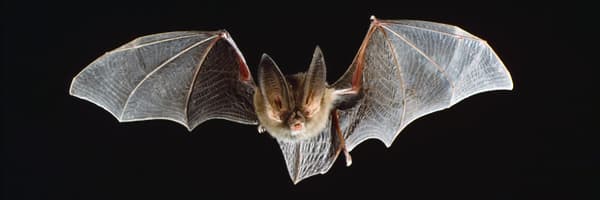
- Learn-by-doing activity: Virtual bat dissection to examine existing bat diets.
- Data collection and analysis: Make and compare measurements of bat physical features. Analyze dietary flexibility (i.e., access to food resources) based on physical features.
- Aligned to NGSS MS-LS-2-1: Analyze and interpret data to provide evidence for the effects of resource availability on organisms and populations of organisms in an ecosystem.
Note: Scientist mentor videos available in English and Spanish.
Insect Apocalypse!
Total Estimated Time: 2-3 class periods, 170 minutesThis investigation will engage your students in examining how an essential, beneficial organism in ecosystems (bats!) can adapt to changes in their food resources (insects!).
Students learn about the Insect Apocalypse (a documented, drastic decline in worldwide insect populations) and analyze its potential effects on varied bat species. As food resources decline, which bats will struggle and which will thrive?
Activity 1: Are you going to eat that? (Learn-by-doing activity)
Do all bats compete for the same food resources?
(20-30 minutes)
- Led by a scientist mentor, students engage in virtual dissection of bat stomach contents to determine what bats eat now and how much they compete for food resources. Students sort insect pieces into categories, comparing patterns across two bats to determine if they compete for food resources.
Activity 2: What else can you eat? (Data collection and analysis)
How do bats' physical features influence what they can eat?
(30-45 minutes)
- Students then gather data on bats' physical features, measuring specimens to determine overall size and bite strength. Students reason about how physical features influence an organism's ability to adapt its diet.
Activity 3: Conclusion: Super flexible or super-at-risk? (Evidence-based argument and communication)
Will bat species thrive or decline as resources change?
(25-35 minutes)
- Using a series of interactive visualizations, students reason about the impact of resource changes and dietary flexibility on future bat survival. Students will develop an evidence-based argument about the degree of future risk for two bat species.
